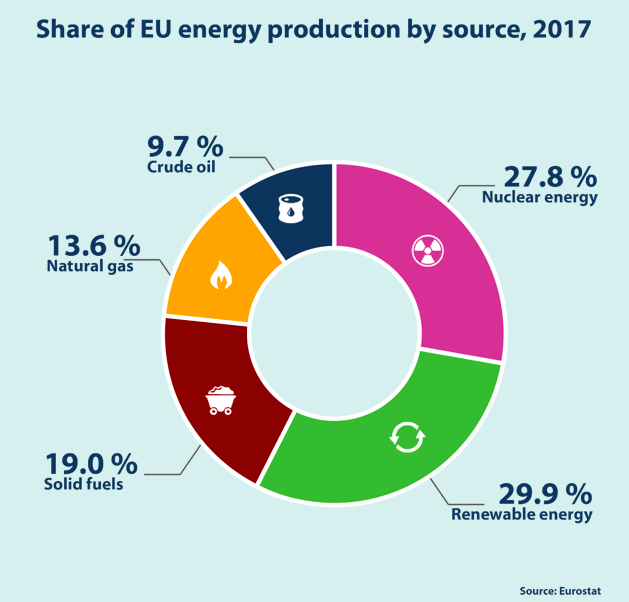This past Wednesday, the European Union set a massive green goal — become the first climate neutral continent by 2050. The EU, which began as a conglomerate of six countries in 1958, has grown to include 28 countries (although this number may change to 27 in the near future with the Brexit campaign in the United Kingdom). The most recent country to have joined was Croatia in 2013.
The European Union, although it is made of countries with very different identities and cultures, allows easier travel in between its member countries, both for tourists and business. Also, nineteen of the 28 countries use the same form of money, the euro (€). And while each country has its own legal system and leaders, they also each have a commissioner that represents them at the European Union Commission. The Commission is based in Brussels. As of December 01, 2019, it is led by the commissioner from Germany, President Ursula von der Leyen. The budget for the EU is currently €165.8 billion euros and President von der Leyen is showing that this new year, a significant portion will go to climate change efforts.
The European Green Deal will focus on seven policy areas: clean energy, sustainable industry, building and renovating, sustainable mobility, biodiversity, sustainable food systems, and pollution elimination. How do they plan to achieve these goals? The main methodology for achieving carbon neutrality is to make it more economically beneficial for both communities and businesses to transition to a more sustainable model of growth.
Where are they starting?
In Europe, 75 percent of greenhouse gas emissions stem from energy production within the EU countries, which accounts for only 45 percent of the EU’s energy use in total. Those are upsetting numbers. Meanwhile, 55 percent of its energy is imported from other countries, with the better part of imports being crude oil.

In terms of industry and mobility, only 12 percent of European industry uses recycled materials and transportation accounts for the other 25 percent of Europe’s greenhouse gas emissions.
But what does the Green Deal propose?
This Green Deal proposes four objectives to be used as general guidelines, like a climate change mitigation mind map, to achieve carbon neutrality for the continent before 2050. This plan in the EU begins with the establishment of a climate law, which will put the EU on an irreversible path by making a legal commitment to sustainable development. It also seeks to set out specific biodiversity protection legislation before the United Nation’s Convention on Biodiversity in Kunming, China this coming November. Also, quite importantly, it will promote a transformation to a circular economy. Circular economies are based on the ‘reduce-reuse-recycle’ mentality instead of the single-use model we follow now. The video below provides a general overview of the system.
And finally, the Green Deal plan includes an idea called the Just Transition Mechanism. This mechanism will be funded by the Just Transition Fund, which claims €100 billion euros. It is intended to help countries and regions that could face a more difficult time transitioning to sustainable modes of development because their economies currently rely on ‘carbon intensive activities’. The fund will go to not only providing support for citizens in transition-vulnerable areas, but will also provide education in sustainable job fields and employment opportunity. While it is unclear who will keep the EU accountable and the exact timeline of events, President von der Leyen is establishing climate change as an even bigger priority on the international stage. She is casting the European Union as a leading role in creating innovative economic strategies for the future. To achieve this incredible challenge would be to show the world that it can be done – and that there will be no excuses for continuing to develop unsustainably.
“The European Green Deal is our new growth strategy – for a growth that gives back more than it takes away. It shows how to transform our way of living and working, of producing and consuming so that we live healthier and make our businesses innovative. We can all be involved in the transition and we can all benefit from the opportunities. We will help our economy to be a global leader by moving first and moving fast. We are determined to succeed for the sake of this planet and life on it – for Europe’s natural heritage, for biodiversity, for our forests and our seas. By showing the rest of the world how to be sustainable and competitive, we can convince other countries to move with us.”
President Ursula von der Leyen of the European Union Commission
 Food
Food Farmers
Farmers Sustainable Living
Sustainable Living Living Planet
Living Planet News
News